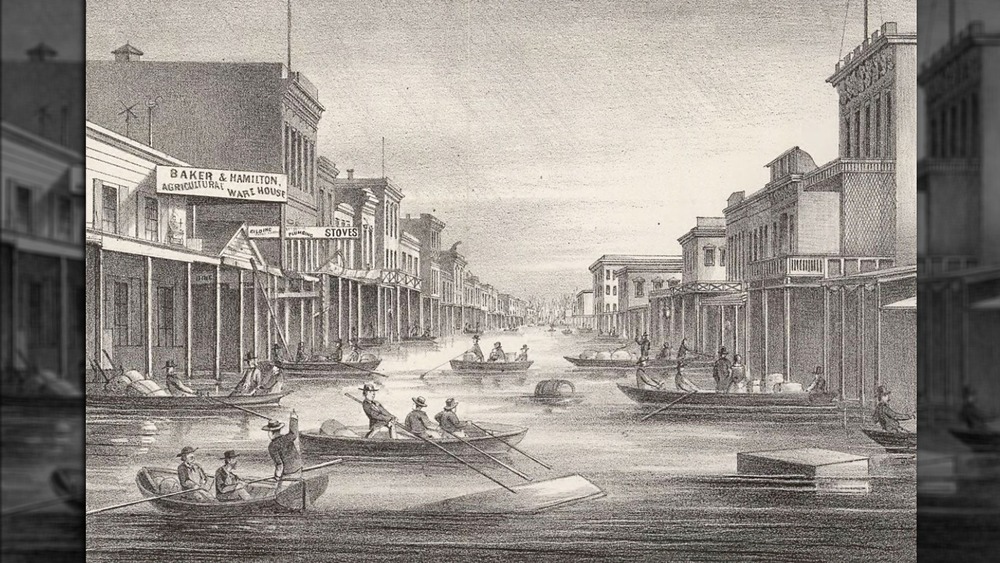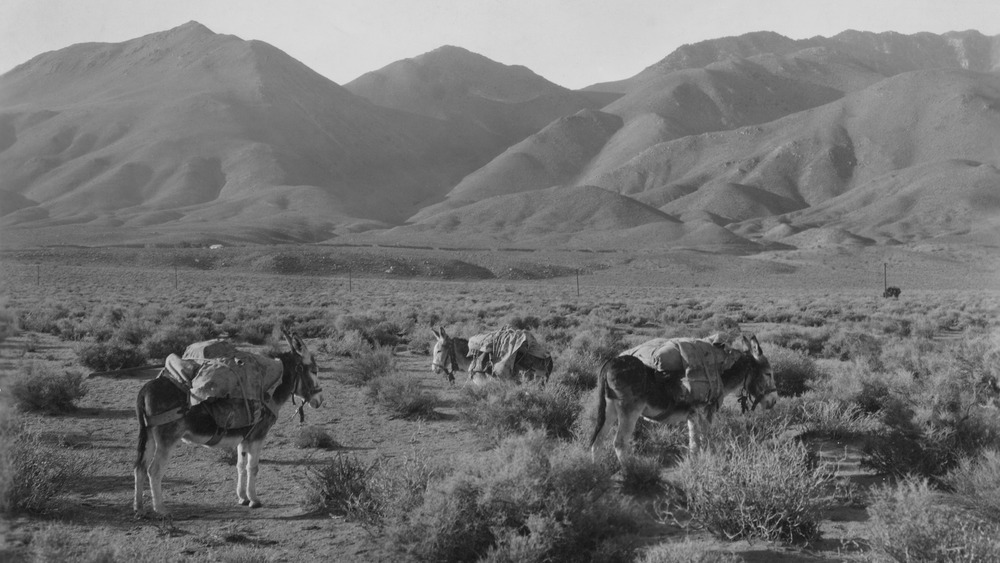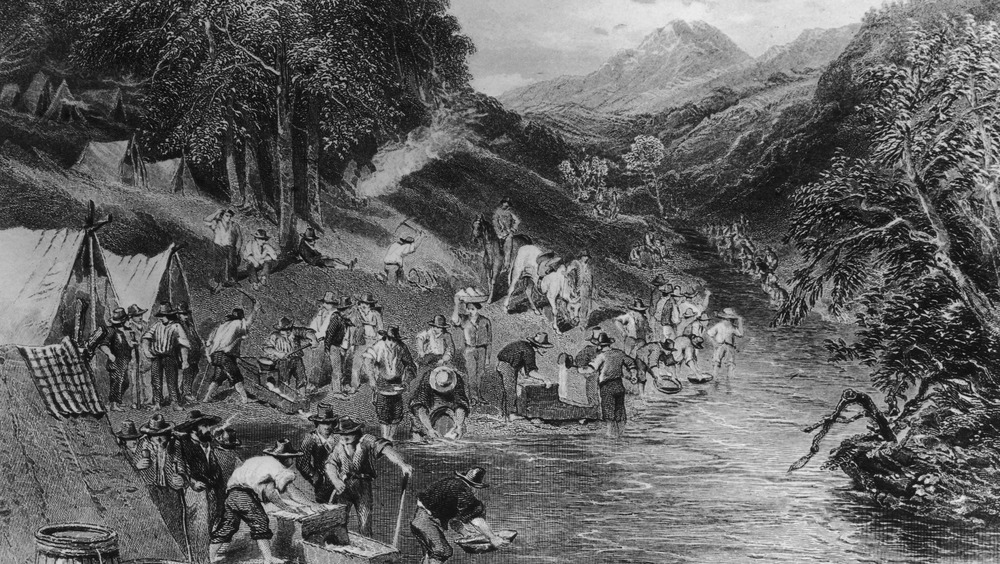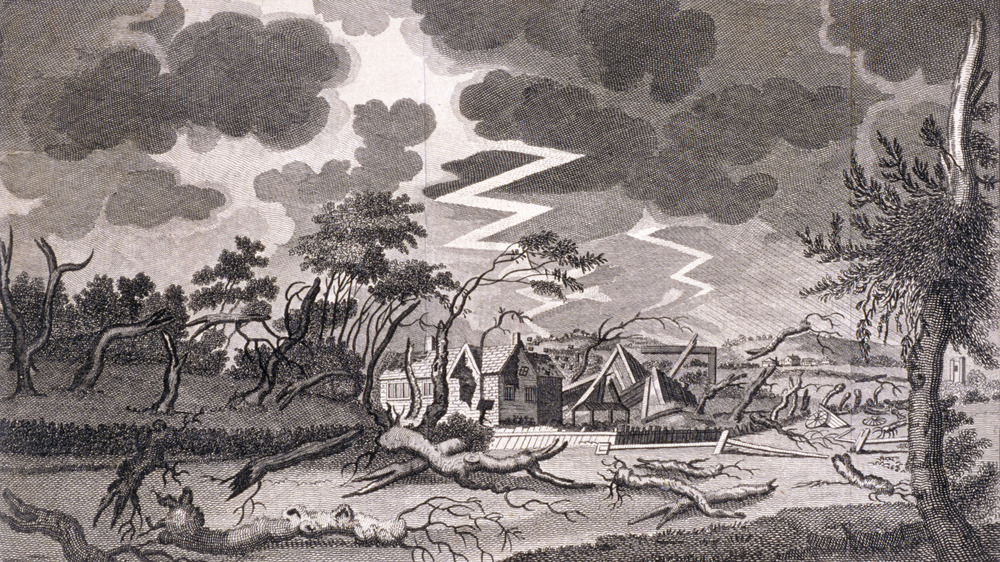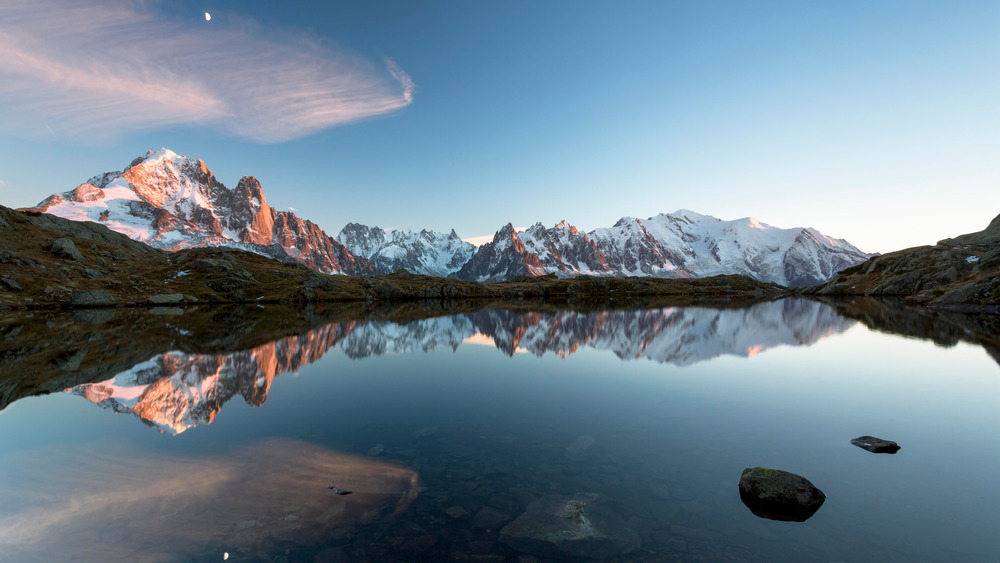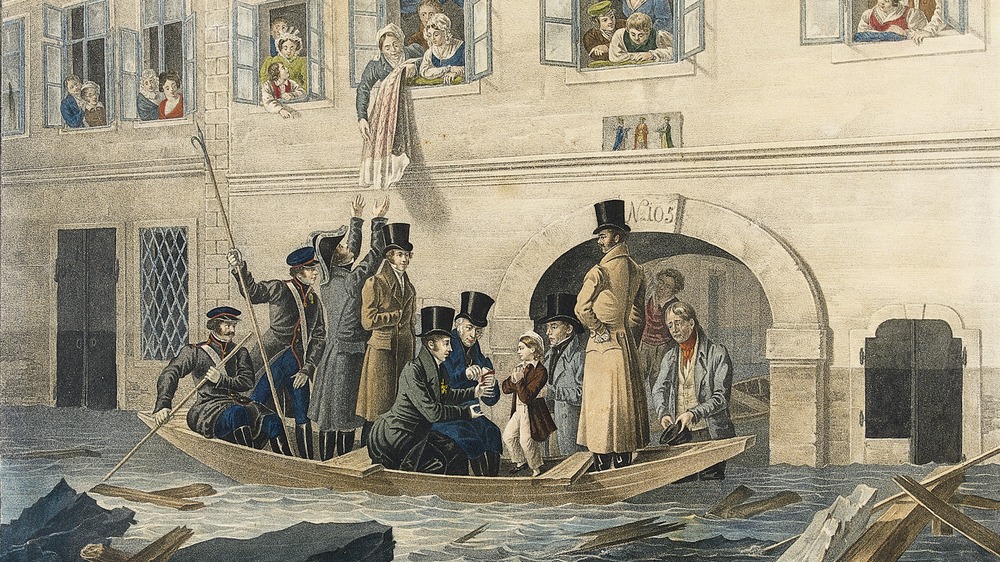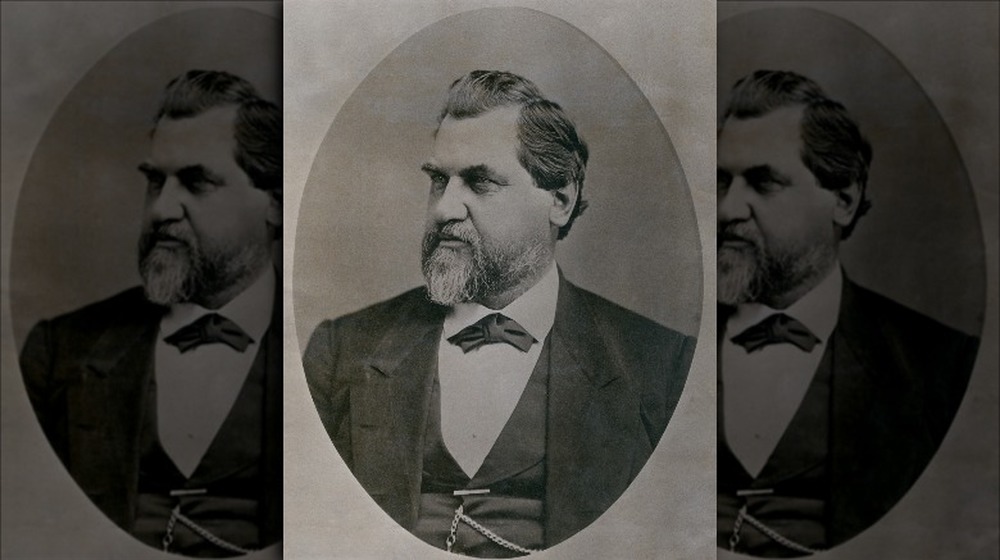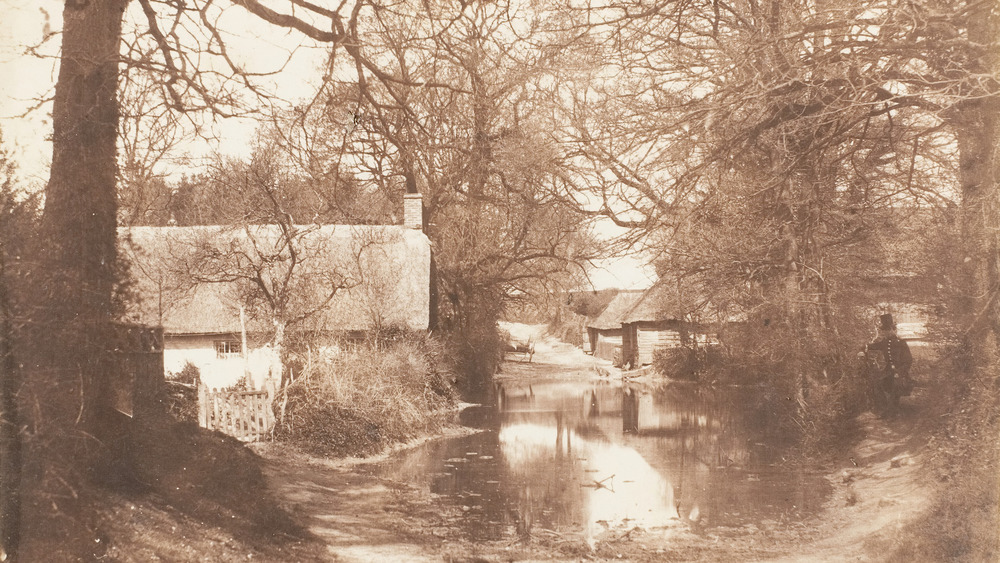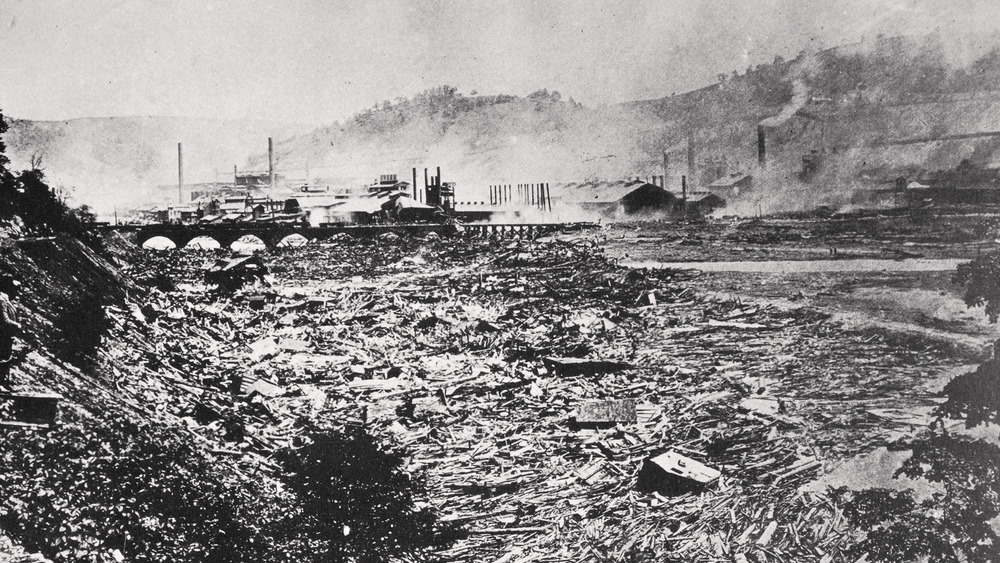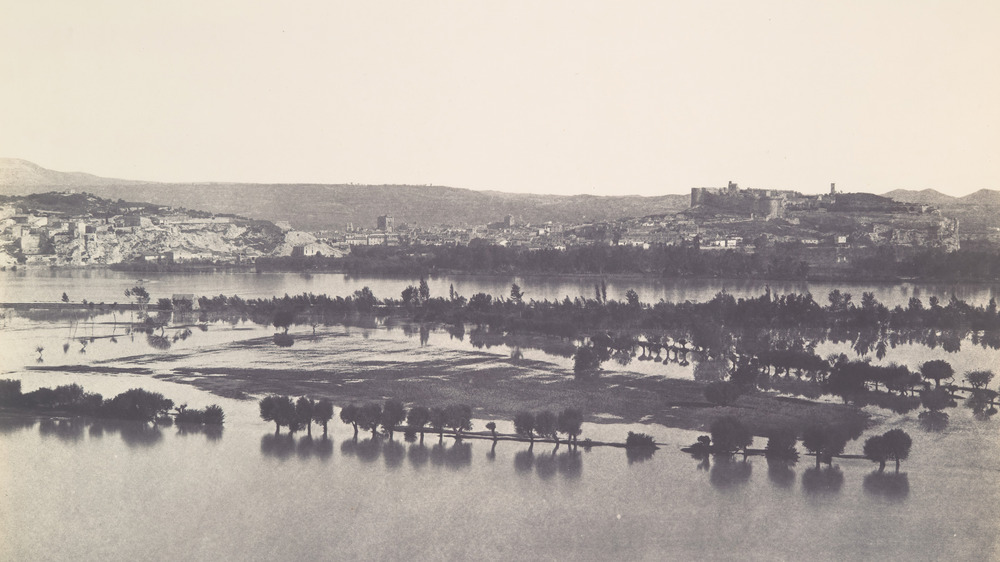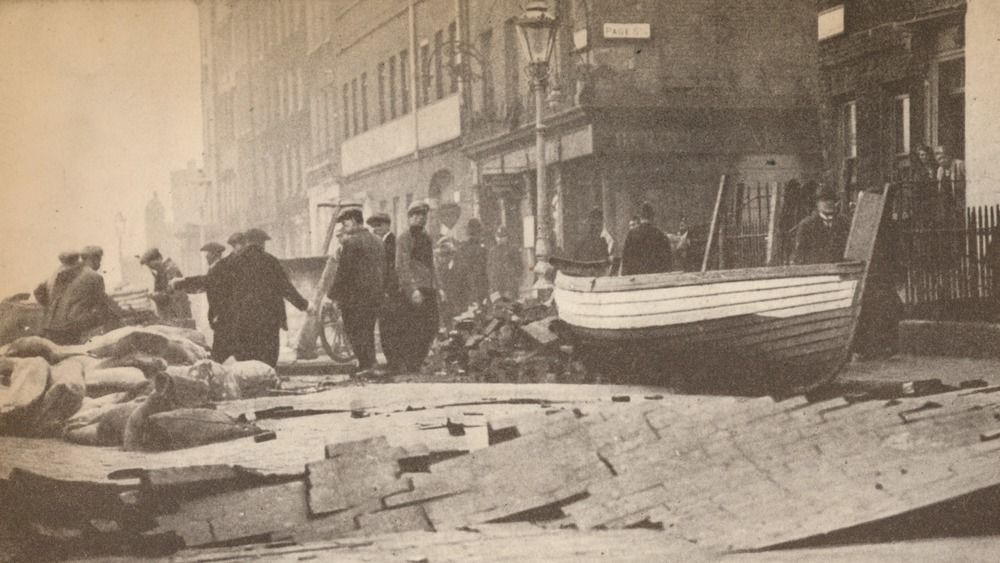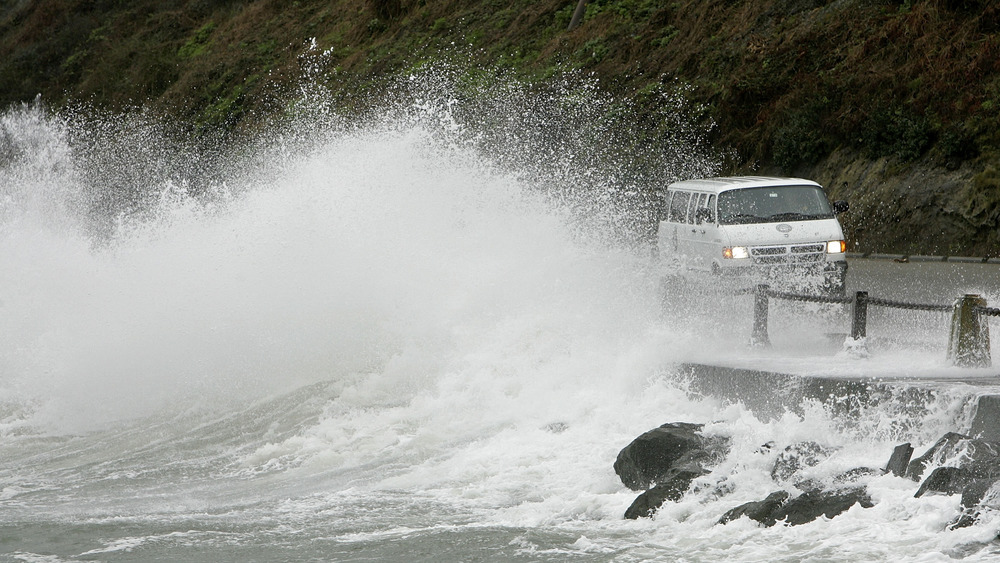The Tragic 19th Century Megaflood Everyone Forgot About
California is known for a lot of things. That glamorous Los Angeles life that TV shows love, Hollywood and its stars, Disneyland, and so many fantasies. But on the flip side, there are some less-than-pretty things the state might be known for — frequent earthquakes that rumble through the ground or long stretches of drought followed by even more drought. All of those things are pretty well known, but maybe — just maybe — floods should be added to that list. Strange, right? To have both flooding and drought be on the same list of disasters that could strike the same state.
The precedent is absolutely there for it, though. People have just kind of forgotten about it. Somehow. It seems like the largest flood in the recorded history of multiple states, which raged down the entire west coast — as far north as British Columbia, as far south as Mexico, and as far east as Utah — would be pretty memorable. Seriously, the flood created an entire new sea and left rampant destruction in its wake, sweeping people, animals, and buildings away in the current. It almost sounds like a movie.
And yet, the Great Flood of 1862 has been just about forgotten to history, even though it really shouldn't be. It's a tragedy in its own right but also something that people would be smart to be aware of. After all, what if the "big one" that hits California isn't an earthquake but a flood? It's just as likely.
Before the Great Flood of 1862, California was dry
In all honesty, California isn't really known for floods. Really, it's a lot more accurate to say that the state is known for the exact opposite — incredibly long stretches of time spent in a drought (via EarthDate). And that doesn't seem like much of a stretch to assume. At the time of writing, California is, again, in the midst of another drought, with data released in late January 2021 by the United States Drought Monitor showing that, lo and behold, the entire state is in some level of drought (or at least unnaturally dry).
That was also the state of things in the mid-19th century, albeit maybe even a little worse. By the time the end of 1861 rolled around, the state had been in a drought for just about two whole decades (via The Sun). With most of the population of the state congregated in the Central Valley at the time, most people — the ranchers in particular — were basically praying for rain. The industry just needed to see an end to the drought. By the end of the year, their prayers would be answered (and then some).
The signs of the Great Flood were there
The Great Flood didn't come out of nowhere by any means. For that matter, floods and storms, in general, aren't entirely unpredictable. Compared to other natural disasters, like earthquakes, huge storms are actually kind of foreseeable, coming on the heels of various different smaller and quantifiable geological phenomena (via USGS). It's definitely possible to see these sorts of things coming.
And that's not just true because of 21st century technology and scientific know-how. The signs have always been there, and it's just a matter of knowing how to read them. The local Native American tribes did know how to understand those signs, having lived in the area for the last 10,000 years (via Active Norcal). They knew what was coming, aware of the regular nature of how the Central Valley could flood, and all evacuated to the foothills in early December, about a week before the storms would start, says Scientific American.
The European settlers — well, that's a different story. They were largely new to the area, having moved there for the Gold Rush, settling near the rivers for the easy transportation and convenient water source. Most of them had been there for about a decade and seen smaller floods in that time, so even when the natives told them that they expected flood waters, the settlers just ignored it and stayed put, not knowing that the flood on its way was far worse than anything they'd seen before.
A mix of bad storms and snow caused the Great Flood
The huge megaflood that hit the West Coast of the United States is technically called the Great Flood of 1862, but really, it all started in November 1861, notes The Sun. The winter storms started hitting the area earlier than normal, dumping between 10 and 15 feet of snow into the Sierra Nevada Mountains, across Northern California and Oregon (via EarthDate and Scientific American).
That's a pretty good amount of snow, but the real problem came after that. Namely, it was the rain. A storm system moved into California from the north, sitting there for about 40 days, with rain falling for 28 of the 30 days between late December and late January, reports ResearchGate. The first storm hit on Dec. 9, 1861, with two more making themselves known after the New Year on January 9 and 15. But these weren't just normal storms. They were massive — record-breaking, actually, dumping more rain on California than even the rarest, highest average ever noted. In a lot of places, there was multiple times more rain in a month than the annual average. The annual average, not monthly.
And if the storms weren't enough, there was still the snow to deal with, because those storms were unusually warm. They melted all that snow in the mountains, and all that water had to go somewhere, flowing into the Central Valley, on top of the rainwater.
The Great Flood created a huge inland sea
California's Central Valley is sort of set up like a giant bowl — mostly flat on the bottom with mountain ranges rising up to both the east and west, says ResearchGate. It's pretty much made to do a really good job holding a bunch of water, especially considering that there's almost nowhere for the water to go once it's there. The entire Central Valley can only drain out to the ocean via the Sacramento-San Joaquin River Delta, which flows out to converge with a bunch of other rivers in the San Francisco Bay (a relatively small area, compared to the entire Central Valley).
So when that's combined with record-breaking rainfall, melting snowpacks, and swelling rivers, you get a recipe for disaster. The entire Central Valley wasn't a valley anymore. It was a massive inland sea, tucked between the mountains. William Brewer recorded the destruction, finding whole towns underwater or washed away — even the telegraph poles were entirely underwater — with just a lake in their place (via Scientific American).
All in all, this new, temporary lake stretched 300 miles long and about 20 miles wide, according to The Sun, with certain areas up to 30-feet deep. The numbers sort of speak for themselves.
People had to traverse by rowboat during the Great Flood
During the Great Flood, a lot of towns — especially those in Northern California and the Central Valley — were almost entirely underwater. It only makes sense that, in light of that, the roads were completely impossible to use, notes Scientific American. So what's there to do when the roads are submerged under multiple feet of water? Well, plenty of people started taking to using boats as the new means of transportation.
Surveyor William Brewer made all of his observations while rowing through the streets, finding furniture floating through yards and basements. Some of the roads had begun to dry a bit but only barely enough that they were above the water, while yards and sewers were still completely flooded. And even then — even with slightly dried roads — the streets weren't really traversable. That is, unless it's easy to travel along a street blocked by an entire house that'd been uprooted from its foundation.
In Sacramento, where the city was under 10 feet of muddy, brown water, just about everyone had to get around town by rowboat, at least if they weren't busy fleeing to San Francisco, also by boat (via ResearchGate). What's more, when the city and its people were in need of supplies, those goods were also brought in by fully crewed boats and a couple steamers.
Boats were required for the inauguration
The city of Sacramento was actually made with floods in mind. It sits at the intersection of two rivers — the American and Sacramento Rivers — and so floods have always been a possibility, hence the construction of levees around those rivers, notes The Sun.
That said, no one predicted the level of flooding that the Great Flood would bring, and the levees just couldn't handle it. The waters of the Sacramento River swelled to over 22 feet, and one of the levees broke on Dec. 9, 1861, putting the city effectively under water (via ResearchGate).
But in the middle of all of this, Leland Stanford had just been elected governor. With the inauguration scheduled for January 10, it was decided that the ceremony would still be held at the capitol building, reports Scientific American. Not the best idea.The day before the ceremony, another levee broke, raising the water level to 24 feet, and on the day of, the water levels were still rising by a foot every hour. Stanford had to row himself from his home to his inauguration in front of the drowning capitol building, and then back again. But with the flood waters rising so high, he couldn't enter his house through the front door. Instead, he had to climb back in through a second story window.
The Great Flood came with a heavy death toll
A natural disaster of this magnitude doesn't come without some kind of cost, and the Great Flood is no exception. With entire towns entirely or partially underwater and homes drifting off in the current, the loss of life was tragically inevitable. There isn't an exact number and reports vary, but estimates say that there were at least a thousand deaths in California alone — probably multiple thousands — and at a time before it became the bustling, highly populated hub that it is in the 21st century.
Deaths by drowning were being reported every day in certain areas, especially in areas near the rivers. Flooding on the Yuba River killed an entire settlement of Chinese miners. The numbers vary a lot by report, some saying 500 while others claim a death toll of 1,400, but either way, it's not a number to scoff at (via Scientific American). People had to evacuate their homes, sometimes even in the middle of the night, and stories in the Daily Alta California from late January tell some of those terrifying tales. There were more than a few near-death experiences, like someone trying to escape in boats that broke or getting swept downstream for almost a mile by the flood and barely surviving. And of course there was tragedy, like a family being unable to save their child from drowning, unable to find them in the darkness and chaos.
The economy was ruined by the Great Flood
With the flood waters carrying away anything that wasn't bolted down, businesses suffered harshly, decimating the California economy. A third of all property was completely destroyed, as were an eighth of all the homes, and a quarter of the economy as a whole was ruined (via Scientific American). At the time, the damages were thought to amount to somewhere between $10 and $15 million, though William Brewer estimated that number was closer to $50 or a $100 million, reports ResearchGate. Adjusting for inflation, that's somewhere between $1 or $2 billion in the 2000s. California was basically bankrupt at that point.
Smaller businesses and specific industries saw their own share of heavy losses. Buildings were either washed away entirely or buried deep in sand, amounting to thousands of dollars in damage for individual businesses, notes the Daily Alta California. Farmers lost whole stores of grain over the course of a month. Mining sites and ditches were impossible to use, leading to hundreds of thousands of dollars in damages for the mining industry.
But the ranching industry was hit especially hard. Hundreds of thousands of sheep, lambs, and cattle were killed, either by drowning or starvation. That was actually a quarter of all the cattle killed just by this flood (via EarthDate and The Sun). The loss was so dramatic, it went on to completely change the Central Valley's industry from ranching to agriculture — what it became known for since then.
California's Central Valley wasn't the only place affected by the Great Flood
Even though Northern California and the Central Valley were hit especially hard by the Great Flood, they weren't the only places affected by what happened. The storms raged up and down the entire West Coast, and the flood itself is the largest in recorded history for all California, Nevada, and Oregon, reports The Sun.
In Nevada, there were similar floods as those seen in the Central Valley. The state overall saw two times its normal annual rainfall, turning Carson Valley into yet another inland lake, while Nevada City was submerged in 9 feet of water, reports Scientific American. Utah started calling it the "year of the floods" — fitting for a month filled with a mix of constant snow, rain, and winds that could destroy villages. In Oregon, the rains started in early December and continued non-stop for weeks, overflowing creeks and rivers, and floods strewing debris and dead bodies across the plains (via Mail Tribune).
Southern California also saw its fair share of damage, despite being more sparsely populated in comparison. Los Angeles had the worst of it, taking on 35 inches of rain, while the overflowing waters in the San Diego floodplain carved new routes to the ocean (via ResearchGate). The property damage was especially bad. Homes at the time were made of adobe bricks, which ended up dissolving in the water, completely ruining them.
The response to the Great Flood was varied
People reacted in different ways to the Great Flood. While California was still in the worst of it, many people chose to respond with huge acts of charity. Sacramento had it worse than people initially thought, and a group came together on short notice to provide supplies to the city –11,000 pounds of cooked ham, 30 tons of provisions, 22 tons of clothing, and thousands of dollars, all sent over on fully crewed boats (via ResearchGate).
Of course, afterwards, there were the changes to infrastructure that came as a direct result of the flooding. Sacramento poured money into raising the entire downtown up by 10 to 15 feet, making it a bit safer should another flood come around, and Stanford actually built an entire third story onto his house, refusing to use the bottom floor for anything, notes Scientific American.
Mostly, though, people were just scared. The flood shook the residents of California to their core. Many of them had immigrated to the area for the Gold Rush and thought they understood the weather patterns. But the flood proved to them just how unpredictable and dangerous the weather could be, and they began to lose faith in the place they'd come to call home.
Despite that, though, as the decades and centuries passed, people have just about forgotten that this flood ever happened.
The ARkStorm Scenario
California is pretty well known for its earthquakes (and rightly so), meaning that there's a decent bit of earthquake preparedness that goes on fairly regularly, according to Scientific American. And yet there's very little awareness or preparation for flooding.
In light of that, the USGS designed something called the ARkStorm Scenario. Modeled after the Great Flood and the storms that caused it, the ARkStorm Scenario was made to look at the geological effects of a megastorm like those in 1861 and 1862, as well as the wider results that would have on California in the 21st century. And the results are pretty bleak.
Basically, the hypothetical scenario ended up finding that California would be woefully unprepared for another megastorm. Most major counties would be affected physically, meaning that everywhere would be affected economically. Unsurprising, given the estimated $725 billion in damages. A quarter of all buildings would be flooded to some extent, levees would still break, and 1.5 million people would be displaced (not even counting the sizable death toll). And with at least six other megastorms having happened in the past 1,800 years, it's as likely as a huge earthquake, while carrying a much higher cost.
But at least there's some hope. Storms are more predictable than earthquakes, usually preceded by specific geological signs that could be detected earlier and with more accuracy. Plus, California already has regular earthquake preparedness exercises in place. Why not do the same for floods?
